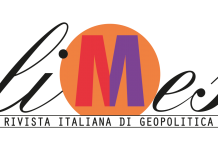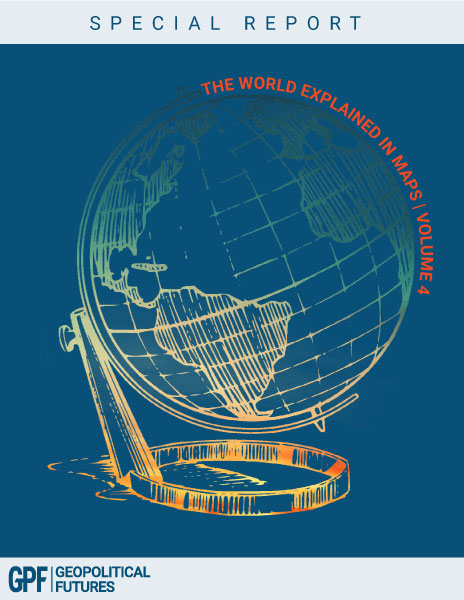By GIORGIO CUSCITO
1. The People’s Republic of China wants to use a future, stable ceasefire between the Russian Federation and Ukraine to crystallise a new security paradigm in Eurasia. An arrangement based on three objectives: to downsize US strength along the eastern border of NATO, to the benefit of Moscow; to definitively make the latter a minority partner in anti-American terms; to stabilise Sino-European relations in the name of trade and investment. Given what is at stake, the reconstruction of Ukraine once the war is over is certainly relevant, but secondary on Chinese President Xi Jinping’s agenda.
This difficult project leads the People’s Republic to carry out several interlinked operations. Peking obstructs Western initiatives to stop the war in Ukraine, hoping then to assert its own. The mission of the Ukrainian Foreign Minister to Peking is an important signal of Chinese involvement in the solution of the crisis. Moreover, China encourages Russia’s dependence on the Chinese energy and technology market in exchange for political and military support. It asks Moscow for more access to the Arctic. It signs new agreements with the countries of Central Asia (which the Kremlin considers its area of influence) to reduce the dependence of the Belt and Road Initiative (BRI, New Silk Road) on the land corridor that runs through Russia and Ukraine. Finally, China makes more or less concrete attempts to mediate between Israel and Palestine, exemplified by the reconciliation agreement between 14 Palestinian factions, including Hamas and Fatah, signed in the Chinese capital at the end of July. China’s objective is to protect the BRI Central Asian and maritime (Suez) routes (the latter is much more relevant in terms of trade), showing itself to be a stabilising actor on a global scale in the face of American decline.
The latter effort yields little results, especially in the West. According to a recent survey conducted by the Pew Research Center in 35 countries, on average 53% of respondents have a negative opinion of China, while only 35% have a positive one. The sample surveyed is rather small: the United States and member states of the European Union are the most sceptical towards Peking; Chinese soft power is most successful in Africa and Latin America, while Asia is divided between those who welcome China’s rise (such as Thailand, Singapore, and Malaysia) and those who strongly fear it (Japan, South Korea, Philippines). Concerns are driven by the People’s Republic’s assertiveness toward Taiwan and in the China Seas and the growing Sino-Russian political, military, and technological collaboration that NATO criticised for the first time explicitly during the Washington summit held between 9 and 11 July.
The Taiwan dossier remains at the top of China’s priorities even when looking at Ukraine. The People’s Liberation Army (PLA) studies Moscow and Kiev’s war operations to improve the strategy and tactics it would adopt in a possible war around the island. All this is taking place while the Chinese Armed Forces face internal problems and the United States urges other NATO members and the People’s Republic’s Eastern rivals to hinder its rise on both sides of Eurasia.
2. The anti-American relationship between China and Russia remains strong, as demonstrated by the absence of both powers at the Peace Conference organised by Kiev in Switzerland. However, the official documents signed by Peking and Moscow no longer include the ‘no-limits’ friendship that stood out in the joint declaration of February 2022 – that friendship was dismissed twenty days before Putin ordered the invasion of Ukraine. The change confirms that the People’s Republic perceived that event as serious economic and image damage.
Above all, Xi’s trip to Astana (Kazakhstan) in early July for the Shanghai Cooperation Organisation (SCO) summit showed that in order to dodge war in the former Soviet Republic, Peking is focusing on the New Silk Road Corridor that runs through Central Asia, the Middle East, and Turkey. It could not be otherwise. The Eurasian Rail Alliance Index compiled by the rail operator UTLC points out that between January and August 2023 the total volume of containers between China and the EU via Russia, Kazakhstan, and Belarus fell by 50 per cent year-on-year. Several European companies avoid transit through Russian territory to avoid sanctions or being considered too friendly towards Moscow. The arrival points for goods have dropped from eleven to five. Now the destination countries are only Belgium, Hungary, Poland, Germany, and the Netherlands. A large part of Chinese goods heading West by land stops in Russia.
The Chinese president took advantage of the SCO summit to pay a formal state visit to Kazakhstan and meet its President, Kassym-Jomart Tokayev. This earned him a grand welcome from the host at the airport, as well as invited to enter last – after Putin – the Independence Palace and a seat to Tokayev’s right at the talks table. The attention paid to Xi was facilitated by the fact that the SCO chairmanship now lies with China.
The leader of the People’s Republic began his speech in Astana by pointing out that China’s diplomatic presence in the ‘Western Regions’ (Xiyu, i.e. the territories between Xinjiang and Central Asia that had been a protectorate in Imperial Times) began during the Han Dynasty (138-126 BC) thanks to the Emissary Zhang Qian. Xi had sent a similar message in May 2023, when he organised the first China-Central Asia summit in Xi’an (the birthplace of the ancient Silk Roads) by holding the opening ceremony in a theme park dedicated to the Tang Dynasty (618-907), known for extending its rule in this part of the world. The aim was to legitimise Chinese enterprise in the heart of Eurasia – especially in the eyes of Russia.
Peking and Astana renewed cooperation in several areas, starting with energy, mining, and railways. In the latter sector, the two governments inaugurated a new infrastructure project: the Trans-Caspian International Transport Route. From Kazakhstan, Chinese goods cross the Caspian Sea by ship. Then, from Azerbaijan, the route forks to Georgia and Turkey, before reaching Europe via the Southern portion of the Black Sea or the Mediterranean. As part of this initiative, a Sino-Singaporean consortium will build a new port in the Georgian town of Anaklia.
The SCO summit triggered a series of Chinese operations in the direction of Europe. After leaving Kazakhstan, Xi travelled to Dushanbe, where he won the support of Tajikistan’s President Emomali Rahmon on the Taiwan dossier and the development of the Global Development Initiative, the Global Security Initiative, and the Global Civilisation Initiative. That is, the three fora promoted by Peking to reinvigorate its soft power abroad outside the BRI framework.
A few days after the meeting between Xi and Turkish President Recep Tayyip Erdogan in Astana, the construction of a factory by the Chinese company Byd (a leader in the field of electric cars) began in Turkey. The facility (worth one billion dollars) will be built in Manisa, forty kilometres from Izmir and its large port on the Aegean Sea. Here the Shenzhen-based company will also erect a research and development centre. The Chinese aim is to evade the duties imposed by the EU on Byd thanks to the customs agreement between Brussels and Ankara.
Turkey represents one of the few stable interlocutors along the BRI central corridor. In recent years, Erdogan has been less hands-off on the delicate dossier of the Uyghur minority (Muslim and Turkish-speaking) in Xinjiang, which Ankara considers part of the Turkish world and calls East Turkestan. This allowed the logistics giants Cosco and China Merchant to gain control of the Kumport terminal in the port of Ambarli. Last June, Foreign Minister Hakan Fidan even visited Xinjiang. The last mission there by a representative of the Ankara government had been carried out by Erdogan in 2012. After Jihadist attacks between 2014 and 2015 in the region and in other parts of China, Peking implemented a tough campaign to crush terrorist cells and forcibly ‘Sinicise’ the Uyghur minority using the notorious detention camps. During the trip, Fidan controversially wore a blue and white tie, the colours of East Turkestan, but promised that his government will cooperate with Peking against terrorism. The mutual tolerance between Xi and Erdogan on this issue stems from their desire to do business and consolidate their respective influences in Central Asia, to the detriment of Russia.
Back in China, the Chinese leader received Hungarian President Viktor Orban who, by virtue of the fact that his country had recently been assigned the European Council’s rotating presidency, was in the midst of mediating between Russia and Ukraine. Earlier he had met Volodymyr Zelenskyy and Vladimir Putin. Yet Xi and Orban spoke not only about war, but also about bilateral relations. Hungary is China’s most solid partner in Europe. On Hungarian soil is Huawei’s largest logistics centre outside the People’s Republic and Byd is building a factory here. Peking will try to take advantage of the Hungarian EU presidency to soften the EU’s opposition to China on the technology front. Considering the limited and temporary nature of Orban’s role in Brussels, the first effect of Sino-Hungarian collaboration could be the deepening of friction between Peking and European countries.
In the run-up to the NATO summit in Washington, China started a joint military exercise with Belarus (which became an SCO member at the Astana summit) in the vicinity of Brest, a handful of kilometres from Poland. Although the operation formally served to train in counterterrorism activities, Peking showed that it can have a military presence close to the Atlantic Alliance. Minsk has a different agenda: it seeks access to markets and investments beyond Europe as it wants to be less dependent on Moscow, and to join BRICS, which the People’s Republic uses as an economic driver to catalyse the consensus of the countries that are losing faith in American leadership.
Collaboration with Belarus coincides with Peking’s interests in the Baltic and the Arctic, where Russia is apparently more willing than in the past to accept a Chinese port and technological presence. At the beginning of July, Arctic Express No. 1 was inaugurated, an intermodal route to connect Moscow to the ports of the People’s Republic by stopping at the port of Archangel and crossing the Pole’s icy waters. The 13,000-kilometre route is expected to take 20 to 25 days – half the time required for the Suez Canal route. It is unclear whether the ships will enter the port of Vladivostok, which by concession of the Kremlin is integrated into the maritime traffic between the northern and eastern provinces of the People’s Republic. In any case, for Peking the use of this port of call is a historical revenge, since it was part of imperial China before it was invaded by foreign powers following the Opium Wars.
Moscow is aware of this and seeks to contain China’s East-Siberia ambitions by destabilising the already complicated relationship between North Korea and the People’s Republic. This is proven by the recent meeting between Putin and Kim Jong Un and the mutual defence pact that the two Heads of State signed. Moscow and Pyongyang do not even seem willing to allow the PLA Navy to use the Tumen River (which partly divides North Korea from the two neighbouring powers) to directly access the Sea of Japan in the direction of the Pole. The hitherto unimplemented ‘Ice Silk Road’ (bingshang sichou zhilu) is part of China’s plan to develop new routes of penetration into Eurasia, progressively encircle Russia, allow its naval units to operate in the Arctic and from there eventually be ready for missile attacks against the United States. This explains the apprehension of countries such as Sweden and Finland, which have just joined NATO.
Also in mid-July, while Sino-Belarusian exercises were taking place, the PLA Navy trained with its Russian counterpart off the coast of Guangdong, in an unspecified area of the South China Sea. The timing was not a coincidence. On the same days, the US and the Philippines were conducting joint operations in the same waters. Further south, in Australia, meanwhile, Exercise Pitch Black was taking place, the major training activity organised by Canberra in which twenty countries took part, including Italy, France, Germany, Spain, and the United Kingdom. This simulation confirms the progressive connection between NATO and US partners in the East.
Peking wants to show that it has Moscow’s support in stemming this dynamic. Yet the Federation would hardly intervene with all its resources on the side of the People’s Republic in an Indo-Pacific war. This would dangerously distract it from what is happening along the unstable western front that divides NATO from Russia’s geopolitical core.
3. China is also taking advantage of developments in the war in Ukraine to update its strategic and tactical approach towards Taiwan. The sinking of the Moskva fuelled the Chinese Navy’s thoughts on how to limit damage in a naval battle. Peking was then surprised by the efficiency of the Russian Ka-52 helicopters (which it has been buying since 2021) in Ukrainian skies after an initial difficult phase in which several units were shot down. The PLA foresees extensive use of these means in the event of an invasion of Taiwan.
The trench warfare between Moscow and Kiev have convinced the Chinese Armed Forces to intensify urban guerrilla training, with raid scenarios in cities such as Taipei and Kaohsiung in the lead. Activities in Belarus also included night landings and fighting in urban centres. In addition, Chinese strategists debated the possible dPLAoyment of submarine mines in front of the main ports in the event of a naval blockade. Conversely, Taipei is considering landmines to prevent PLA landings. Perhaps it is also in light of these dynamics that the Chinese Armed Forces are testing a new device to detect buried ordnance.
The massive use of drones for espionage and warfare purposes in the Russian-Ukrainian confrontation has spurred the People’s Republic – and the United States – to prefigure an intense aerial and naval battle between such means in the Taiwan Strait. In a Shanghai shipyard, a Type 076-class ship, dedicated to the transport of drones and helicopters, is under construction. In order to conduct its operations, Kiev has also reportedly purchased large quantities of quadcopters (for theoretically commercial use) from China’s DaJiang Innovations (DJI), circumventing restrictions imposed by Peking.
Meanwhile, Chinese military drones are in demand in Libya, just a few kilometres off the Italian coast. At the end of June, Italy’s Financial Police (the Guardia di Finanza) seized two Wing Loong II units disguised as wind rotor components in the Italian port of Gioia Tauro. The units were headed for Benghazi, most likely for use by the Libyan National Army led by Khalifa Haftar. Peking has long wanted to contribute to the reconstruction of the city of Derna in Cyrenaica. In the medium term, it could take advantage of the Russian and Turkish presence in Libya to invest there permanently. This would consolidate its presence on the southern shore of the Mediterranean, close to NATO.
Xi’s coveted war progress, however, has to contend with organisational issues and persistent power struggles in the PLA. These issues have been confirmed by the recent reorganisation of technology intelligence and the ouster of high-ranking officials. They include former Defence Minister Li Shangfu and members of the Rocket Force and the Equipment Development Department. Also implicated in the affair is Li’s predecessor, Wei Fenghe, who has been accused of zhongcheng shi jie, literally ‘being disloyal and losing one’s chastity’. In the 4th century, this terminology indicated the moral degradation of the ruling class and between the 10th and 13th centuries it referred to non-chaste women, such as widows who remarried. In modern times, shi jie has been used to qualify Communist Party members who sided with the Kuomintang during the Civil War. Today, it could indicate that Wei passed information to a hostile country. The tension is such that companies in the nuclear, aerospace, and shipbuilding sectors have promised to fight corruption within them.
4. The People’s Republic’s need to remain economically and technologically linked to the West to fuel its growth and the great unknowns generated by a war scenario with America around Taiwan are pushing Peking to favour freezing the Russian-Ukrainian conflict, without however turning its back on the Kremlin. Having sufficiently neglected Western mediations, Xi could put himself forward as a great conciliator by leveraging the fact that he is the only one able to get Putin to sit down at the table with Zelenskyy. In that case, the presence of the US at the table would be almost certain, regardless of who occupies the White House in 2025.
China has little experience in handling such crises and it is difficult for this diplomatic exercise to succeed. Assuming it succeeds, once the conflict is over Peking could offer to rebuild Ukraine. The idea is explicitly mentioned as the last of the twelve points that make up the plan drawn up by Xi in February 2023 to achieve the ‘Settlement of the Ukrainian Crisis’, thus titled because the word ‘war’ would not be accepted by Russia. Before Moscow’s invasion, the People’s Republic was the former Soviet Republic’s main trading partner, from which it bought barley, corn, sunflower seeds, and weapons. Some of the port infrastructure built there by Chinese companies to speed up the transport of these goods was damaged during the war.
With Ukraine neutral and deprived of territories occupied by Russia, and with tensions between Moscow and the West lowered, Peking would first try to maintain its ascendancy over the Federation. The northern corridors of the new overland silk routes would become passable again but would be less indispensable than before, given the investments in Central Asia. Russia’s areas of influence would become springboards for increasing Chinese projection towards the West. At that point, what would matter most from Peking’s perspective would be to make sure that in the future the White House and the Kremlin do not come to some understanding to counterbalance China’s rise. For only with such an upheaval, which for now is remote, could the American strategy to contain China in the Indo-Pacific be said to be complete.






